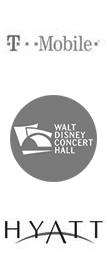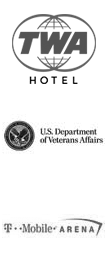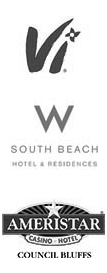Engineering Services

Correctly designing and planning a distributed antenna system (DAS) for indoor or outdoor environments require the following services:
- Site survey: A site survey is necessary to gather information about the coverage area and signal strength. The survey helps identify the coverage gaps and signal dead zones that need to be addressed in the DAS design.
- RF design and engineering: RF design and engineering services are required to develop a comprehensive DAS design that meets the coverage and capacity requirements of the Carrier.
- Permitting and zoning: Permitting and zoning services are necessary to obtain the necessary permits and approvals from local authorities to install the DAS network infrastructure.
- Structural engineering: Structural engineering services are required to assess the structural capability of buildings and other structures to ensure that they can support the DAS network infrastructure.
- Project management: Project management services are necessary to ensure that the DAS network is installed on time, within budget, and according to the design specifications.
- Installation and commissioning: Installation and commissioning services are required to install and test the DAS network infrastructure, including antennas, cabling, and amplifiers.
- Testing and optimization: Testing and optimization services are necessary to ensure that the DAS network is functioning correctly and meeting the coverage and capacity requirements of the Carrier.
- Maintenance and support: Maintenance and support services are required to ensure that the DAS network is operating at optimal performance and uptime levels. These services include regular maintenance, repairs, and troubleshooting.
- Network monitoring and management: Network monitoring and management services are necessary to ensure that the DAS network is continuously monitored for performance and uptime. The services include 24x7x365 monitoring, performance reporting, incident response, and remote management.
Capacity planning for an indoor and outdoor cellular distributed antenna system (DAS) involves assessing the capacity requirements of the Carrier and designing the DAS network infrastructure to meet those requirements. Capacity planning is essential to ensure that the DAS network can handle the projected traffic demand and provide the required level of service quality to end-users.
The following are the key elements of capacity planning for an indoor and outdoor cellular distributed antenna system:
- Traffic analysis: Traffic analysis involves assessing the expected volume of voice and data traffic that the DAS network will need to handle. This analysis takes into account the number of users, their devices, and the types of applications they will be using.
- Network topology design: The network topology design is the physical and logical arrangement of network elements such as antennas, cabling, and amplifiers. The design should be optimized to meet the coverage and capacity requirements of the Carrier.
- Equipment selection: Equipment selection involves choosing the right hardware and software components for the DAS network. The selection should be based on the capacity requirements, network topology design, and vendor compatibility.
- Capacity modeling: Capacity modeling involves simulating the performance of the DAS network under different traffic scenarios to identify potential capacity bottlenecks and optimize network capacity.
- Performance monitoring and optimization: Performance monitoring and optimization involve continuously monitoring the DAS network’s performance and making adjustments as needed to ensure that the network is meeting the capacity requirements.
Capacity planning is critical for both indoor and outdoor cellular distributed antenna systems. In indoor environments, capacity planning may involve assessing the traffic demand of a particular building or area and designing the DAS network infrastructure to meet that demand. In outdoor environments, capacity planning may involve assessing the traffic demand of a particular region or metropolitan area and designing the DAS network infrastructure to provide the required coverage and capacity.
Benchmarking, commissioning, and optimization are important processes in the design, deployment, and maintenance of both indoor and outdoor cellular distributed antenna systems (DAS).
Benchmarking involves comparing the performance of the DAS network against industry standards or best practices. This process helps identify areas where the network can be improved, such as signal strength, coverage area, and capacity. Benchmarking can be done during the planning and design phase of the DAS network, as well as during the ongoing maintenance phase.
Commissioning is the process of verifying that the DAS network is installed and configured according to the design specifications and industry standards. This process involves testing the network to ensure that it meets performance requirements, identifying any issues, and making any necessary adjustments to improve network performance. Commissioning can be done during the deployment phase of the DAS network, as well as during ongoing maintenance.
Optimization is the ongoing process of fine-tuning the DAS network to improve performance and efficiency. This process involves analyzing network performance data, identifying areas of poor performance, and making adjustments to optimize network performance. Optimization can include adjusting signal strength, adding or removing network components, and optimizing the placement of antennas.
In indoor environments, benchmarking, commissioning, and optimization may involve testing the DAS network’s performance in different areas of the building, such as stairwells, elevators, and conference rooms. In outdoor environments, these processes may involve testing the DAS network’s performance in different areas of the coverage area, such as busy intersections or high-density residential areas.
Overall, benchmarking, commissioning, and optimization are critical processes in ensuring that both indoor and outdoor cellular distributed antenna systems meet the performance requirements of Carriers and provide high-quality wireless coverage and capacity to end-users.
Field testing and troubleshooting are important processes in ensuring the optimal performance of indoor and outdoor cellular distributed antenna systems (DAS). These processes involve conducting physical tests on the DAS network, identifying any issues or problems that arise, and implementing solutions to resolve those issues.
Field testing involves using specialized equipment to measure the performance of the DAS network. This includes measuring signal strength, coverage area, and data throughput. The results of these tests are compared to industry standards and best practices to identify areas where the DAS network can be improved.
Troubleshooting involves identifying and resolving issues that arise in the DAS network. This can include problems with the network hardware, software, or configuration. Troubleshooting involves analyzing network performance data, identifying areas of poor performance, and making adjustments to improve network performance. Troubleshooting can include adjusting signal strength, replacing network components, and optimizing the placement of antennas.
In indoor environments, field testing and troubleshooting may involve conducting tests in different areas of the building to identify areas of poor signal strength or coverage. Troubleshooting may involve identifying and resolving interference issues, such as radio frequency (RF) interference from other wireless devices.
In outdoor environments, field testing and troubleshooting may involve conducting tests in different areas of the coverage area, such as busy intersections or high-density residential areas. Troubleshooting may involve identifying and resolving issues related to environmental factors, such as interference from buildings or natural obstacles.
Overall, field testing and troubleshooting are critical processes in ensuring that both indoor and outdoor cellular distributed antenna systems are operating optimally and providing high-quality wireless coverage and capacity to end-users. These processes help identify issues and implement solutions to improve network performance and ensure customer satisfaction.
Peer reviews and competitive design reviews are two types of design review processes that are commonly used in engineering and other technical fields.
Peer reviews involve having a team of peers or subject matter experts review a design or proposal to provide feedback and identify potential issues or areas for improvement. This type of review is typically conducted by individuals who have expertise in the relevant technical area or field. The goal of a peer review is to ensure that the design is technically sound, meets the requirements of the project, and is feasible to implement. Peer reviews can also help identify potential risks or challenges that may arise during implementation.
Competitive design reviews, on the other hand, involve comparing multiple design proposals from different teams or companies to determine which proposal is the most effective or innovative. This type of review is often used in situations where multiple solutions are being considered for a given problem or challenge. During a competitive design review, each team presents their design proposal and the proposals are evaluated based on criteria such as technical feasibility, cost-effectiveness, and innovation. The goal of a competitive design review is to identify the best possible solution for the project or challenge at hand.
Both peer reviews and competitive design reviews can be valuable tools for ensuring that designs are effective, efficient, and feasible to implement. By bringing in outside experts to provide feedback and evaluate design proposals, organizations can increase the likelihood of success for their projects and reduce the risk of costly mistakes or delays.
An example of a review that RSS may conduct is looking at the Radio Frequency (RF) power requirements of a design. When an in-building distributed antenna system (DAS) is not designed with enough power, it can result in poor or unreliable wireless coverage for users within the building. This is because the antennas and amplifiers used in a DAS are responsible for distributing the wireless signal throughout the building, and if the system is not properly designed to account for factors like building size, layout, and user density, it may not be able to provide adequate coverage.
Some potential consequences of an underpowered in-building DAS include:
- Dead zones: Areas of the building where the wireless signal is weak or nonexistent, leading to dropped calls, slow data speeds, or complete loss of service.
- Inconsistent coverage: Areas of the building where the wireless signal may fluctuate, causing calls to drop or data speeds to slow down unexpectedly.
- User frustration: Employees, visitors, or other users within the building may become frustrated with the poor quality of the wireless service, leading to complaints or dissatisfaction.
- Lost productivity: If employees or other users are unable to use their mobile devices effectively within the building, it can lead to lost productivity and decreased efficiency.
In summary, an in-building DAS that is not designed with enough RF power can result in a range of negative consequences for users within the building. It is important to carefully plan and design the system to ensure that it is properly sized and RF powered to provide reliable and consistent coverage.
Our Clientele
Explore some of the great companies that RSS has worked with.






















Why RSS?
The licensed wireless industry is intricate. Experience has been a part of Repeated Signal Solutions (RSS) from the company’s inception in 2004. Unlike our rivals, RSS has been active in the licensed wireless frequency market for 19 years and still represents the majority of our first clients nationally.
- 1
Financial Transparency
The RSS methodology has been demonstrated to put everyone at ease. This approach is the result of 19 years of expertise. - 2
Trust: 92%+ of Our Customers Are Recurring
Among licensed wireless services, RSS is one of the few that puts the client first. - 3
Respect and Understanding for All Stakeholders
To ensure that each party contributes for their use case, our process supports the creation of budgets for each group’s allocation of the system. - 4
Total Solution Experience
We offer end-to-end life cycles with the standard carriers SLAs starting at 10 years as part of our solutions.
Ready to Speak With Our Team?
RSS’ mission is to act on behalf of our customers and provide innovative methodologies and detailed solutions that meet their wireless coverage challenges. We strive to provide value propositions based upon ethical business approaches with a high level of transparency and communication which builds mutual trust, respect and a basis for replicable results in our products and services delivery.
Pete Bohley, President of RSS


